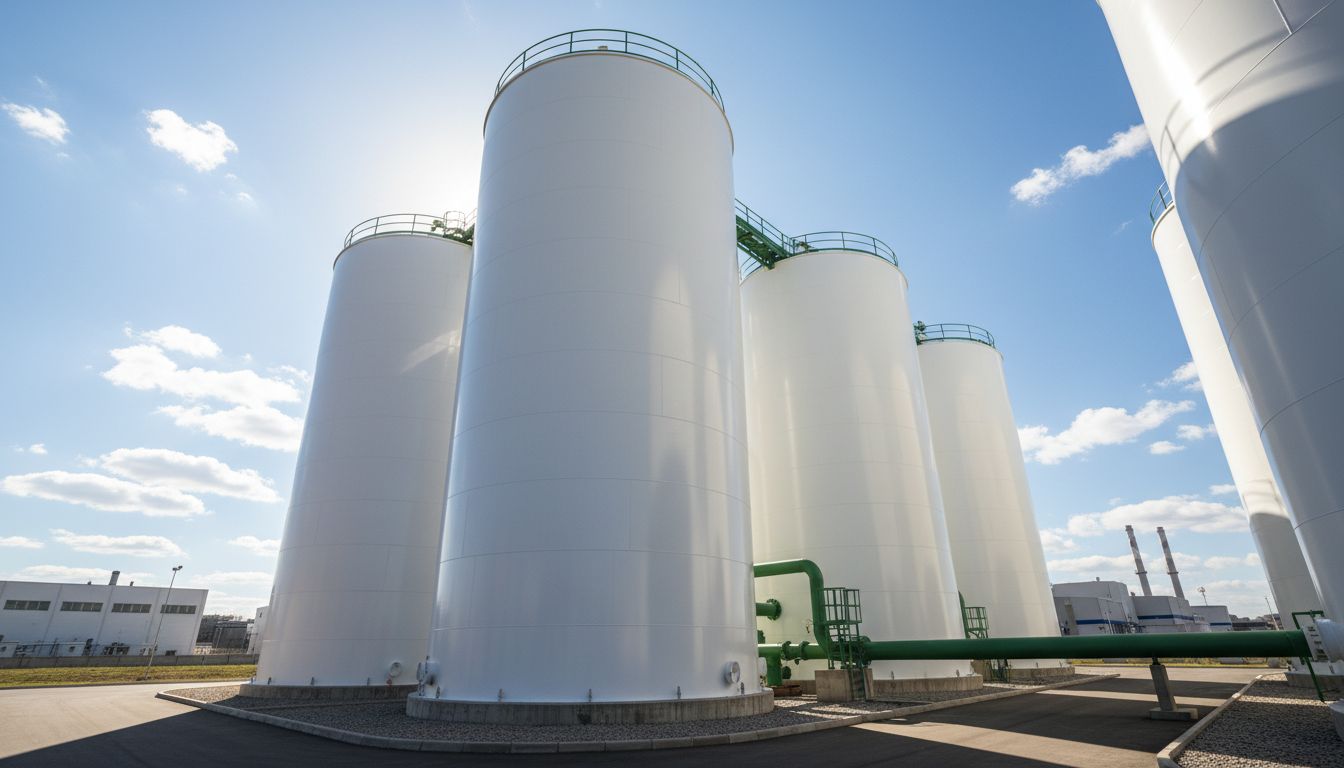
Anaerobic reactors have emerged as a game-changing technology in modern wastewater treatment, offering impressive efficiency for organic pollutant removal while simultaneously generating renewable energy through biogas production. These systems underpin the circular economy by transforming waste into valuable resources in both municipal and industrial applications.
How Anaerobic Reactors Work?
Anaerobic reactors operate under oxygen-free conditions, using specialized microbes to break down complex organic compounds in wastewater. Classic designs include the Upflow Anaerobic Sludge Blanket (UASB), expanded granular sludge bed (EGSB), and internal circulation (IC) reactors, each engineered to optimize mixing, biomass retention, and pollutant degradation.
Key Benefits of Anaerobic Wastewater Treatment
-
Energy Generation: Anaerobic digestion produces biogas, containing methane and carbon dioxide, which can be used for on-site power generation or upgraded for vehicle fuel. 1
-
Superior Efficiency: Advanced reactor designs achieve high removal rates for chemical oxygen demand (COD), biological oxygen demand (BOD), and suspended solids—even with high-strength industrial waste. 2
-
Low Operational Costs: These reactors require less energy input than aerobic systems and yield less excess sludge, translating into cost savings for facility owners. 3
-
Environmental Sustainability: Anaerobic technology helps cut greenhouse gas emissions, control odors, and facilitate nutrient recovery from waste streams. 4
Trends and Applications
Anaerobic reactors are favored for their flexibility: treating food and beverage waste, landfill leachate, textiles, and more. Advanced models now use membranes, staged designs, and innovative mixing systems for even greater efficiency and resource recovery
Biojet IC Anaerobic Reactor: Enhanced Internal Circulation for Superior Results
The Biojet IC Anaerobic Reactor with Enhanced Internal Circulation addresses critical shortcomings found in many conventional systems. Traditional anaerobic reactors often suffer from low water inlet flow rates and insufficient disturbance at the reactor bottom, which limits the mixing of incoming wastewater and return activated sludge. This can lead to suboptimal COD removal and slow startup speeds—problems particularly acute during early commissioning, when gas generation is minimal and internal circulation fails to establish.
Biojet’s IC solution features a unique jet tangential water distribution system. High-speed water flow via the jet substantially boosts inlet disturbance intensity, greatly improving mass transfer between wastewater and biomass. Additionally, the jet creates a negative pressure suction effect, immediately establishing inner circulation even during initial startup. This continuous enhancement of mixing not only accelerates system commissioning, but also delivers considerably higher pollutant removal rates compared to conventional IC reactors.
Operators benefit from:
- Rapid system startup and early-stage internal circulation.
- Enhanced COD and overall pollutant removal performance.
- Reliable mixing and mass transfer, ensuring high stability and output—even under variable loading conditions.
For operators seeking reliable, energy-efficient, and environmentally sound wastewater solutions, Biojet’s next-generation IC Anaerobic Reactor is poised to become the new benchmark in advanced treatment technology.
FAQs
-
Q1: What is an anaerobic reactor? An anaerobic reactor is a wastewater treatment system where microorganisms degrade organic contaminants in the absence of oxygen. These reactors are commonly used to treat high-strength industrial and municipal waste.
-
Q2: How do anaerobic reactors work? Anaerobic reactors maintain oxygen-free conditions for bacteria that break down complex organic compounds into simpler substances. The process has two main stages: acid formation and methane production, resulting in treated water and biogas as useful byproducts.
-
Q3: What are the advantages of anaerobic wastewater treatment?
- High efficiency for COD and BOD removal.
- Generation of biogas (methane), which can be used for heat or power.
- Lower operating costs and less sludge production compared to aerobic methods.
- Reduced odors and improved sustainability.
-
Q4: What types of anaerobic reactors exist? Common configurations include upflow anaerobic sludge blanket (UASB) reactors, expanded granular sludge bed (EGSB) reactors, internal circulation (IC) reactors, lagoons, and anaerobic baffled reactors (ABR).
-
Q5: In which industries are anaerobic reactors used? Anaerobic technology is widely applied in food and beverage, pulp and paper, textile, agriculture, and municipal sectors due to its versatility and cost-effectiveness.
-
Q6: What are typical operational challenges? Anaerobic systems are sensitive to fluctuation in wastewater strength, temperature, and pH. Overloading may cause instability or washout of active biomass, and startup periods can be slow if circulation is poor.
-
Q7: How does Biojet’s IC Anaerobic Reactor improve performance? Biojet’s IC Anaerobic Reactor uses a jet tangential water distribution system, which delivers high-speed inlet disturbance and immediate internal circulation—even during commissioning. This unique design improves mixing, accelerates startup, and increases pollutant removal compared to conventional IC reactors.
-
Q8:What benefits do operators gain from Biojet’s IC solution? Operators experience faster startup times, higher COD removal, and more reliable mixing—helping facilities achieve treatment goals efficiently and with greater process stability.
If you have further questions or wish to learn more about Biojet’s advanced anaerobic reactor solutions, please contact the company directly for detailed technical support.
Footnotes
-
https://www.waterleau.com/en/technologies/biotim-anaerobic-wastewater-treatment ↩
-
https://www.sciencedirect.com/science/article/pii/S0196890424009208 ↩
-
https://www.watertechonline.com/wastewater/article/14301908/the-benefits-of-anaerobic-wastewater-treatment ↩
-
https://www.watertechnologies.com/knowledge-hub/anaerobic-digestion-role-in-wastewater-treatment ↩